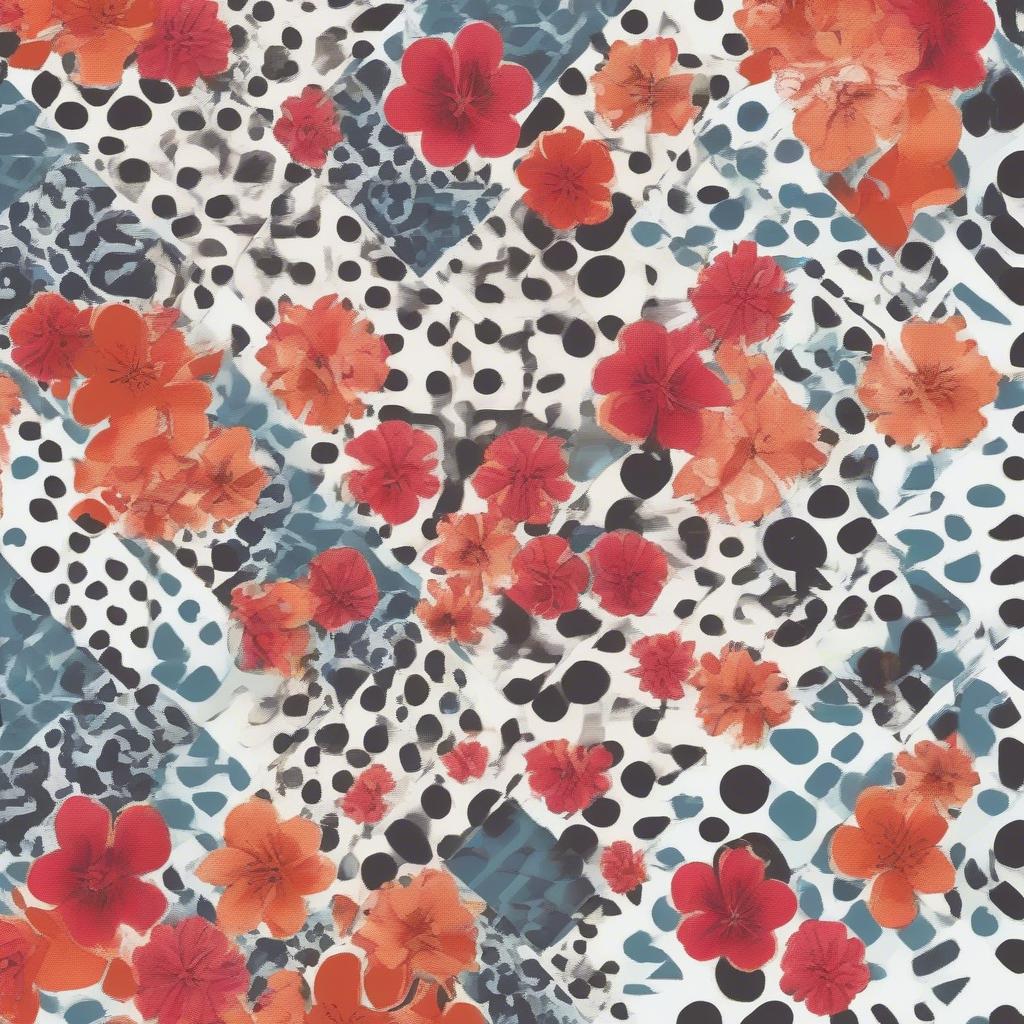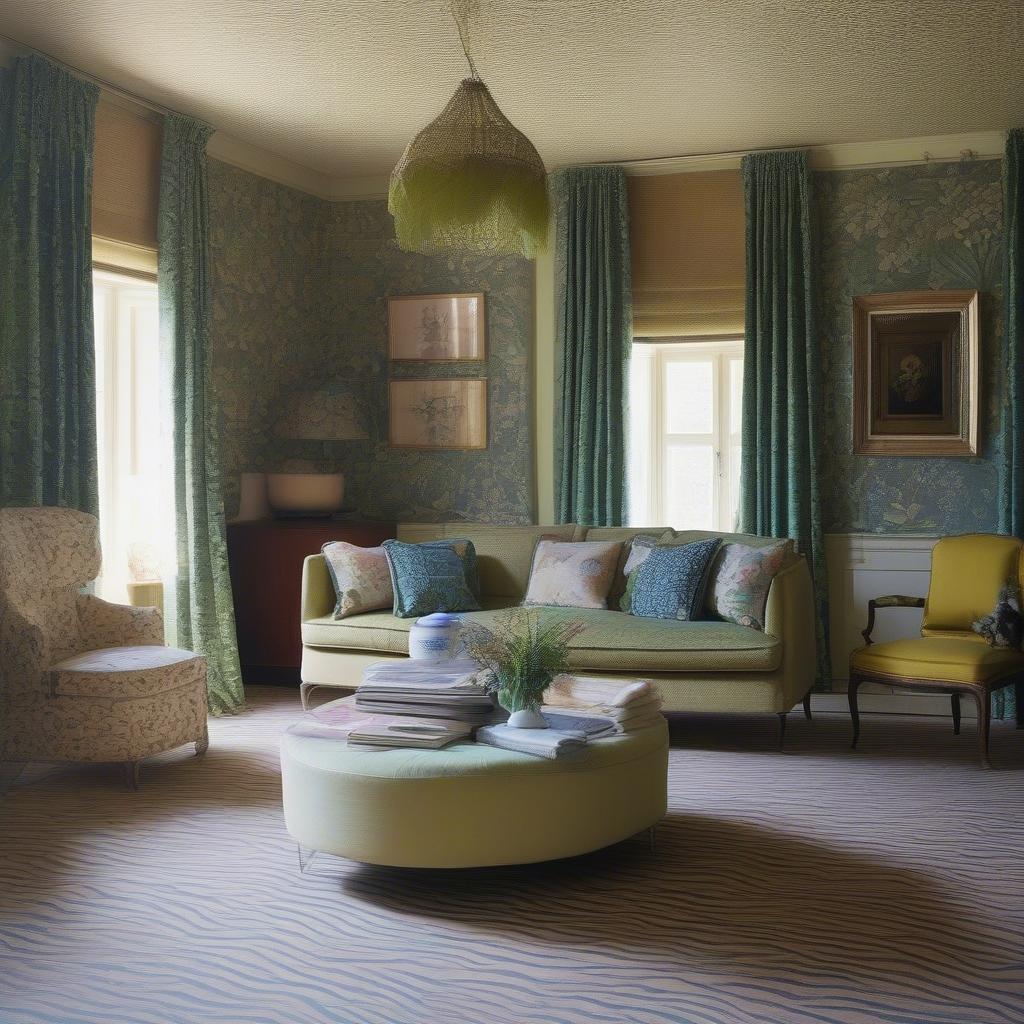
The Art of Fabric Combining: Tips and Tricks from Top Interior Designers
When it comes to decorating a room, one of the most important decisions you’ll make is choosing the fabrics for your furniture, curtains, and accessories. With so many different textures, patterns, and colors to choose from, it can be overwhelming to decide on a cohesive scheme. In this article, we’ll share tips and tricks from top interior designers on how to combine fabrics like a pro.
Start with a Statement Fabric
Many designers agree that the key to creating a cohesive fabric scheme is to start with a statement fabric. This can be a bold patterned fabric, a rich velvet, or a bold-colored linen.
“I usually begin a scheme with a statement patterned fabric and work everything around this,” says Gemma McCloskey, Founder and Creative Director of Cpla. “The key is to find the right balance and ensure you have a mix of different textures and colors.”
Play with Scale
When combining fabrics, it’s essential to play with scale. Mixing large and small-scale patterns can add visual interest and depth to a room.
“Scale and proportion are everything when mixing patterns,” says Stella Weatherall. “A large-scale print paired with a smaller-scale pattern or stripe will complement one another, whereas pairing two large patterns could end up fighting.”
Don’t Forget Texture
Texture is another crucial element to consider when combining fabrics. Mixing smooth and rough textures can add depth and interest to a room.
“I love combining fabrics from different eras and provenance,” says Phoebe Hollond. “Texture can also play a large role in this, there are many spaces that are beyond beautiful in one tone and no patterns, but just by being heavily reliant on creating form through thicker weaves or fine glazed linen is terribly chic as well.”
Use a Neutral Base
Using a neutral base fabric can help tie together different patterns and colors. A plain linen or cotton can provide a neutral background for bolder patterns and textures.
Like Us on Facebook!
“Mixing a patterned cotton with plain linen is also a good way of managing the dynamism of a scheme,” says Sarah Peake, Founder and Creative Director of Studio Peake. “Plains can separate and frame patterns in a way that shows them in their best light.”
Subscribe Us on YouTube!
Experiment and Have Fun
The most important thing to remember when combining fabrics is to experiment and have fun. Don’t be afraid to try out different combinations and see what works for you.
“I think it’s good to have fun when combining fabrics, make combinations playful and don’t worry too much about rules,” says Clare Gaskin. “Your scheme will help dictate what sort of patterns, colors, and textures are right for the space and usage.”
Expert Tips and Tricks
Here are some additional tips and tricks from top interior designers:
* “When thinking about fabric sourcing, I always use this method: Usage, Hero piece, Mix of textures, patterns, and plains, and Common thread running throughout the fabrics.” – Alex Dauley
* “I love colour and pattern but I’m always nervous of the combinations becoming garish, or even worse – twee!” – Rachel Allen
* “The dos and don’ts of bedroom design: use a mix of textures, patterns, and plains to make a cohesive and layered scheme.” – Evie Delaney
* “Yellow can be a neutral – no seriously! Use yellow as a neutral base fabric to tie together different patterns and colors.” – Christabel Chubb
Experts’ Favorite Fabric Combinations
Here are some of the experts’ favorite fabric combinations:
* Philip Hooper, Joint Managing Director of Sibyl Colefax & John Fowler: “Dirty khaki colours with something hot like Schiaparelli pink or Cerise.”
* Pandora Taylor: “I like to have a hierarchy of pattern in a room to ensure a space feels balanced.”
* Carlos Sanchez Garcia: “In the sitting room of this country house, not one single plain fabric has been used. Every fabric has a pattern, be it a print or a weave.”
Key Takeaways
Here are the key takeaways from this article:
* Start with a statement fabric to set the tone for your room.
* Play with scale by mixing large and small-scale patterns.
* Don’t forget to incorporate texture into your fabric scheme.
* Use a neutral base fabric to tie together different patterns and colors.
* Experiment and have fun when combining fabrics.
Conclusion
Combining fabrics can be a challenging but rewarding task. By following the tips and tricks from top interior designers, you can create a cohesive and beautiful fabric scheme for your room. Remember to have fun and experiment with different combinations – and don’t be afraid to try out new and bold patterns and colors.
Here are some of the experts’ favorite fabric combinations:
- Dirty khaki colours with something hot like Schiaparelli pink or Cerise.
- A mix of textures, patterns, and plains to make a cohesive and layered scheme.
- A bold patterned fabric, a rich velvet, or a bold-colored linen.
Recommended further reading:
* “The dos and don’ts of bedroom design” by Evie Delaney
* “The best blue paint color” by Eleanor Cording-Booth
* “Yellow can be a neutral – no seriously!” by Christabel Chubb What is the key to creating a cohesive fabric scheme? Starting with a statement fabric and then balancing it with other textures, patterns, and a neutral base.
What is the key to creating a cohesive fabric scheme? Starting with a statement fabric and then balancing it with other textures, patterns, and a neutral base.
Why is it important to play with scale when combining fabrics? It adds visual interest and depth to a room, making the combinations more harmonious.
How can texture enhance a room’s decor? By adding depth and interest, texture can make the space more dynamic and layered.
Why should one use a neutral base fabric? A neutral base fabric helps to tie together different patterns and colors, providing balance.
What is the most important thing to remember when combining fabrics? To experiment and have fun, allowing the scheme to naturally dictate the patterns, colors, and textures.





















